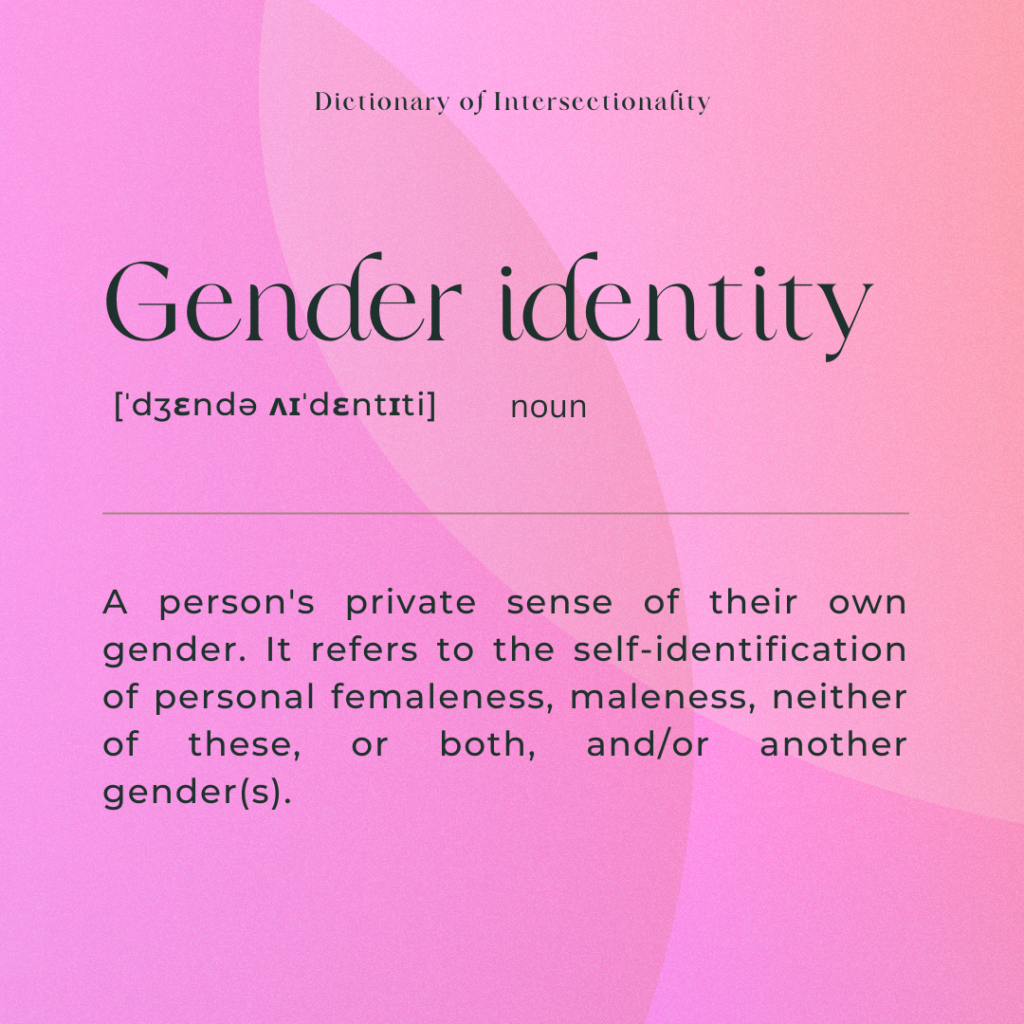
Gender identity is a person’s private sense of their own gender. This concept refers to the self-identification of personal femaleness, maleness, neither of these, or both, and/or another gender(s).
Gender identity is a basic defining feature of a person’s identity that deeply influences every part of people’s life, from their intimate relationships to their participation in work, family, and other social institutions. The concept of gender identity can be better understood by keeping distinguished notions of sex, sexuality, and gender.
Even if gender seems to flow naturally from biological sex, gender and sex are not interchangeable terms. While sex principally refers to the biological aspects of males or females, being related to their physical anatomy, gender includes, in addition to biological elements, the behavioral, psychological, and social characteristics of genders.
Gender studies started a theoretical and conceptual differentiation between sex and gender in the 1970s. The medical literature, including studies of trans and intersex people, declared a biological basis for gender identity. Up to the diffusion of queer theories starting in the 1990s until now, behavioral scientists and researchers in the field of gender studies usually conceptualized gender identity as a binary construct.
Nowadays, binary gender conception doesn’t seem suitable to describe individual gender identity experiences. Different people possess shifting amounts of “maleness” and “femaleness” and their innate self-perception does not fit with the sex assigned at birth. In this perspective, gender not only seems to be a social construct but so are sex and sexuality. Each person has a gender identity. It can be seen as an internal experience, separate from the sex assigned at birth and appearance. Therefore, it shouldn’t be assigned, diagnosed, measured, or disproved by anyone else. Even though every person defines their gender slightly differently, a common set of labels might be helpful in the communication of one’s identity to others. Pressuring someone into a label they do not relate to can result in dysphoria.
See more resources
Fontanella, L., Maretti, M. & Sarra, A. Gender fluidity across the world: a Multilevel Item Response Theory approach. Qual Quant 48, 2553–2568 (2014). Retrieved January 3, 2023, from https://doi.org/10.1007/s11135-013-9907-4
Gender Unicorn. Retrieved January 3, 2023, from https://transstudent.org/gender/
Transstudent. Retrieved January 3, 2023, from https://transstudent.org/about/definitions/
Gender fandom – Gender identity. Retrieved January 3, 2023, from https://gender.fandom.com/wiki/Gender_identity
Transactual. Retrieved January 3, 2023, from https://www.transactual.org.uk/facts-about-trans
An all gender access toolkit. Retrieved January 3, 2023, from https://www.goodnightoutcampaign.org/wp-content/uploads/2021/03/toilets.pdf
